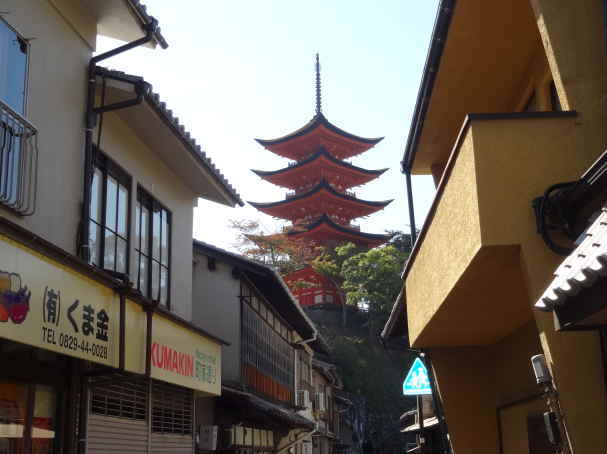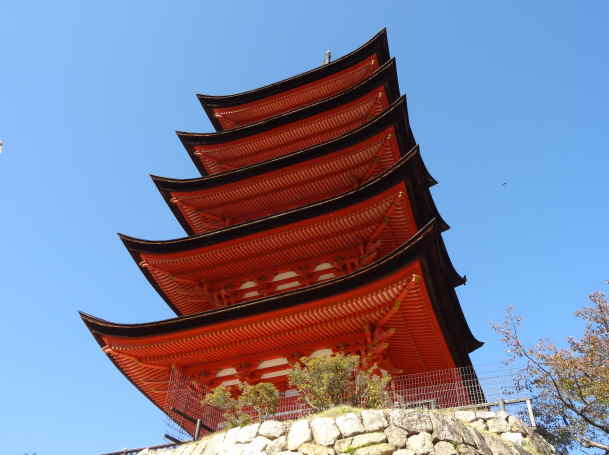| Originally five storied pagoda were constructed to enshrine Buddhafs ash,
but in actuality they enshrined precious stones, Buddha or Bodhisattvafs
statues and sutras instead.
The
origin of the five storied pagoda was the stupa, Buddhafs mound shaped grave in
India, and it was introduced to Japan in the 6th century via China and Korea.
The
shape changed from a soil mound to a wooden building in China, then it evolved
into the Japanese style.
There
exist 22 five storied pagodas, designated as national treasures or important
cultural properties in Japan.
After
Buddhism was introduced, the central government troped to bring peace and
prosperity through Buddhism, and encouraged local governments to build five
storied pagodas with temples.
Emperor
Suiko made Buddhism a state religion, and constructed a Buddhism based
political system.
So
it was more a symbol of authority than a pure religion, I think.
Having
five roofs refrects from the Buddhist world view.
A
view of the world of Buddhism is represented by the five biggest elements: the
earth, the water, the fire, the wind, and the sky, and these five roofs have
this meaning.
At
the time of Meiji Restoration, Meiji government ordered Shintoism and Buddhism
to separate.
Miyajimafs
five storied pagoda was dedicated to Yakushi Buddha, Fugen Bodhisattva, and
Monjyu Bodhisattva statues , but they were moved to the Daiganji temple.
|


